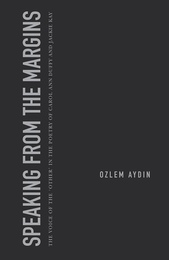Caught up in a scientific racism designed to breed out the blackPosted in Articles, History, Media Archive, Oceania, Politics/Public Policy on 2011-09-10 01:07Z by Steven |
Caught up in a scientific racism designed to breed out the black
The Sydney Morning Herald
2008-02-14
She was removed as a toddler and raped as a ward of the state. Valerie Linow knows only too well the tragedy of assimilation policy, writes Debra Jopson.
The stolen child Valerie Linow is certain she knows why she and thousands of fellow Aborigines were taken from their families and placed in institutions or with white foster families.
“It was because of the colour of their skin, to make the country whiter and whiter. The way to do it was to get the half-castes out of the way,” she says.
Compassionate Australians recoil from that idea, but the historical record shows that this humble pensioner from Miller, near Liverpool, transported to Bomaderry Children’s Home when she was just two, is right….
…In 1933 a Sunday newspaper quoted Dr Cecil Evelyn Cook, dazzlingly qualified as an anthropologist, biologist, bacteriologist, chief medical officer and “chief protector” of Aborigines in North Australia, who pronounced there was no “throwback” to the black once enough white blood was bred in. “Generally by the fifth and invariably by the sixth generation, all native characteristics of the Australian Aborigine are eradicated. The problem of our half-castes will be quickly eliminated by the complete disappearance of the black race, and the swift submergence of their progeny in the white,” he said.
“The Australian native is the most easily assimilated race on earth, physically and mentally. A blending with the Asiatic, though tending to increase virility, is not desirable. The quickest way out is to breed him white,” Cook said.
Scientists and social scientists who calibrated how many drops of white blood made a person civilised gave politicians throughout Australia who were worrying about the “half-caste problem” the arguments needed to remove indigenous children from their families.
The Melbourne University ethnographer Professor Baldwin Spencer, who was made chief protector of Aborigines in the Northern Territory in 1911-12, said: “No half-caste children should be allowed to remain in any native camp.”
In an official 1913 report he wrote: “In practically all cases, the mother is a full-blooded Aborigine, the father may be a white man, a Chinese, a Japanese, a Malay or a Filipino.
“The mother is of very low intellectual grade, while the father most often belongs to the coarser and more unrefined members of the higher races. The consequence of this is that the children of such parents are not likely to be, in most cases, of much greater intellectual calibre than the more intelligent natives, though, of course, there are exceptions to this.”
It seemed only right to give children with enough drops of white blood a chance to join the superior race and for 50 years, from 1919, the NSW Government used its power to take indigenous young from their families and make them wards of the state…
Read the entire article here.
